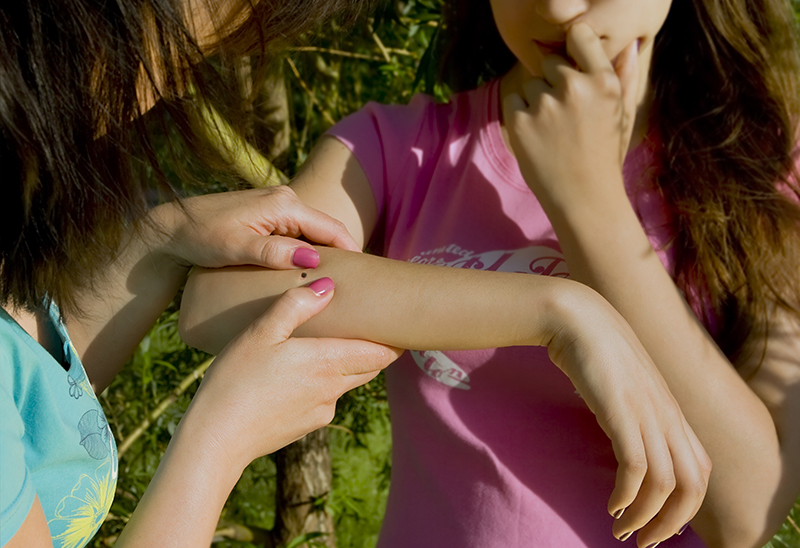What You Need to Know about Ticks, Lyme Disease and Other Dangers
As summer approaches, there is a lot of talk about ticks, Lyme disease and other diseases caused by ticks, especially in the Northeast. Here we separate fact from fiction and share the secrets that could save your life.
What is Lyme Disease?
Lyme disease is caused by Borrelia-type bacteria, which is transmitted to humans in the bite of infected ticks. Unfortunately, the symptoms aren’t always easy to spot. Most common is a red rash spreading outward from the site of the infection about a week after a person has been bitten. But the rash isn’t painful or itchy, so you may not even notice it right away. To make things more difficult, approximately 25 to 50 percent of people don’t develop this rash. There are, however, some early symptoms, such as fatigue, headache and fever. There are more symptoms you may have if the disease goes untreated. These include joint pains, loss of ability to move one or both sides of your face, severe headaches that include a stiff neck, and heart palpitations. Even after you’ve been treated, about 10 to 20 percent of people will still have joint pains, fatigue and memory problems for six months or longer. Even years later, you could experience continued joint pain and swelling.
What You Didn’t Know about Lyme Disease
Lyme is being linked to some of the most major diseases of our time—ALS, MS and Parkinson’s. It is also sexually transmitted, because it has properties that act similarly to Syphilis. The medical community isn’t fully on board yet, but a number of voices are speaking out to draw attention to the far-reaching effects of Lyme disease. Dr. Neil Spector, author of Gone in a Heartbeat, needed a heart transplant after contracting Lyme disease. Even though he’s a top oncologist from Duke University, others in the medical community were resistant to what he had to say. That’s why, if you should contract Lyme, or suspect that you have contracted it, you should make sure you go to a doctor who is aware of the latest research (see below).
How to Treat Lyme Disease
A preventive antibiotic must be administered immediately. To get the best possible treatment and care, it’s crucial that you see a Lyme Literate Medical Doctor (LLMD), not a regular MD or even a specialist in infectious diseases. They follow different guidelines, which are incorrect.
What is Powassan?
Powassan is also a virus that is transmitted by infected ticks. However, it’s not treatable with antibiotics. This makes it highly dangerous, because all that can be treated are symptoms. Powassan was named after the town of Powassan, Ontario, where it was first discovered in a boy who eventually died from it. It’s become a growing threat in the United States, with 75 cases reported in the U.S. in the last 10 years. Most of these cases are in the Northeast and Great Lakes area. Signs to watch out for include fever, weakness, headache, confusion, memory loss, even seizures. There could also be neurological problems that last a long time. Severe cases may require hospitalization—for respiratory issues and swelling in the brain. Medication and intravenous fluids can help.
The Facts about Tick Bites
Not all ticks carry infections. If you do encounter an infected tick, your risk for acquiring one of these diseases is actually pretty low. Here’s why—ticks can only transmit infections after they have attached to skin and fed on blood. If a tick hasn’t yet attached, it can’t spread an infection. As stated by the International Lyme And Associated Diseases Society “While the longer the tick is attached, the higher the risk of transmission, it is possible to get Lyme disease even if the tick is attached for less than 24 hours.”
How To Reduce Your Risk
It’s a good idea to avoid heavily wooded or bushy areas. However, if you enjoy exploring outdoors, be mindful of the threat of tick bites. When you go hiking, pull your socks over your pant legs. The less skin available for the tick to feed on, the better! Chemicals such as DEET aren’t as effective as permethrin. Permethrin is an insecticide made of synthetic chemicals that act like natural extracts from the chrysanthemum flower. It’s proven to be an excellent deterrent for ticks. After you’ve been outdoors, conduct a thorough check for ticks. Put your clothes in the dryer BEFORE you wash them to kill any potential hitchhikers.
How To Remove a Tick
The myth is that you should burn ticks or cover them with Vaseline. These are very bad ideas! They will only increase your odds of becoming infected. The best practice is to take a pair of tweezers and pull the tick straight out, getting as close to your skin as possible so that nothing is left inside. DO NOT TWIST. Once the tick is out, clean the area thoroughly and put on ointment such as Neosporin.
This summer, there is no reason you can’t enjoy the great outdoors. Just remember to be aware of the potential dangers and protect yourself.
Keep checking our blog for more information. And check out our New England Reptile Shows. We showcase fascinating exotic animals. Please visit our website for more details.
If you or a family member gets bit, REPORT IT HERE to get the tick tested and learn what disease causing microbes the tick may be carrying, including pathogens that cause Lyme disease.



